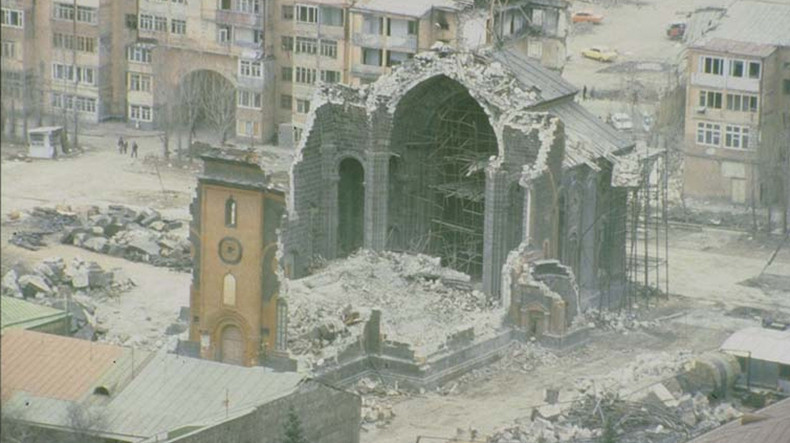
Spitak Earthquake: 28 years on with open wounds still there
Today is the 28th tragic anniversary of one of the worst natural disasters in our contemporary history - the catastrophic Spitak earthquake. Around three decades later, the pain and grief from the disaster are not eliminated and wounds - not healed with tens of thousands of lost human lives and hundreds of thousands homeless, some living in temporary shelters up to these days.
On December 7, 1988 at 11:41 am local time (07:41 UTC/GMT), an earthquake measuring 6.9 on the Richter scale took hit the north of Armenia. The epicenter was in the city of Spitak and surrounding villages. The magnitude in Spitak was 10; Gyumri, 9; Stepanavan, 9; Vanadzor, 8–9; and Yerevan, 6. The total zone of the disaster covered 3k sq. meters, hitting in total 21 towns and districts, 343 villages.
According to official data, the quake killed 25,000 people, 20,000 people received various bodily injuries and left 514, 000 homeless, while the value of material losses were estimated to be at $10 billion US.
The devastating earthquake destroyed 17% of the housing of the republic, 170 industrial enterprises quitted their activity Major damage was caused to architectural, historic, cultural monuments as well as to 917 educational institutions.
Thanks to the efforts of ordinary citizens and rescuers, about 45,000 alive and dead people were recovered from the ruins, 12,500 were hospitalized.
Expert conclusions later revealed that the main reason for such extensive damage was that the seismic risks all across the country had been underestimated. The special government-assigned commission to look into the earthquake aftermath identified that seismic resistance norms for construction had been violated, as was its quality and technology, construction materials failed to meet state standards.
Most human casualties were the result of poor construction, delay of the rescue efforts, lack of knowledge and skills necessary to implement disaster risk reduction activities and awareness of the population during emergency situations.
Newsfeed
Videos






























